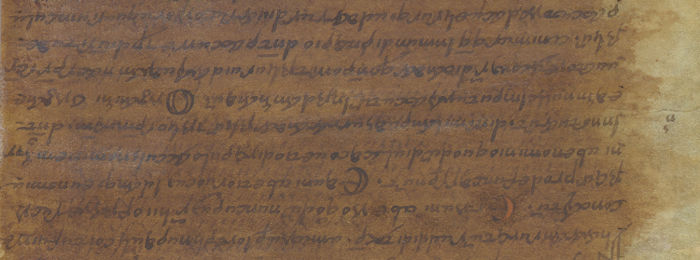Conny Waters – AncientPages.com – A text thought to be lost by the astronomer Claudius Ptolemy (2nd century BC) has been discovered thanks to multispectral imaging, then deciphered and interpreted by two researchers from the Léon Robin Center (Sorbonne University/CNRS), and a researcher from New York University (NYU).

Representation of Ptolemy taken from Popular Science Monthly Volume 78, April, 1911. Credit: Public Domain
This treatise is the oldest known text to describe a scientific instrument. Their work was published on March 9, 2023 in the Archive for History of Exact Sciences.
In June and October 2022, the RESCAPALM project had already discovered the oldest copy of a Latin treatise on the works of Plato and excerpts from a catalog of stars by Hipparchus. This time, an astronomical treatise by Claudius Ptolemy has been decoded. The deciphering and interpretation of the text was carried out by three researchers: Victor Gysembergh and Emmanuel Zingg of the Léon Robin Center and Alexander Jones of New York University.
At the intersection of natural sciences and humanities, the deciphering was made possible by the realization of multispectral images. This imaging work was carried out first by the French company Lumière Technology, then by an international team made up of the EMEL (Early Manuscripts Electronic Library), the Lazarus Project (University of Rochester), the Rochester Insтιтute of Technology and the company MegaVision Inc.
The manuscript containing Ptolemy’s new treatise is a palimpsest, i.e. a manuscript made up of a parchment already in use, which is currently kept at the Veneranda Biblioteca Ambrosiana in Milan (Italy). It comes from the Abbey of Bobbio, one of the most important collections of manuscripts in Italy in the early Middle Ages, which inspired the famous novel The Name of the Rose by Umberto Eco and its film adaptation by Jean-Jacques Annaud.
This document is composed of leaves from a Greek manuscript of the sixth or seventh century BC, which contained several works of the famous astronomer Claudius Ptolemy.
The sheets in question (palimpsests) were erased in the 8th century so that the Latin text of the Etymologies of Isidore of Seville could be copied over the erased text. It is thanks to the use of advanced multispectral imaging techniques that their content was discovered and deciphered.

Ambrosianus L 99 sup. p. 190, ll. 14-23, color image by Lumière Technology. Latin supertext reversed in brown and faint traces of Greek subtext © Veneranda Biblioteca Ambrosiana/Mondadori Portfolio
The new text, which has gaps, describes the construction and use of a nine-ringed armillary sphere, identifiable as the “Meteoroscope” invented by the astronomer Claudius Ptolemy. This major discovery sheds new light on the history of astronomy in antiquity and on the beginnings of the history of science. In particular, it provides a better understanding of the scientific method used by ancient astronomers to make their measurements.
Moreover, this discovery illustrates the progress of advanced techniques such as multispectral imaging, whose application to illegible manuscripts makes it possible to save from oblivion texts belonging to the cultural heritage of humanity.
The study was published in Archive for History of Exact Sciences
Written by Conny Waters – AncientPages.com Staff Writer





